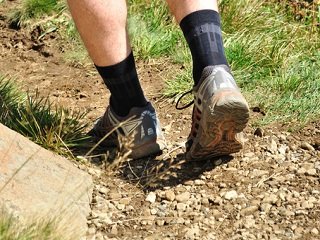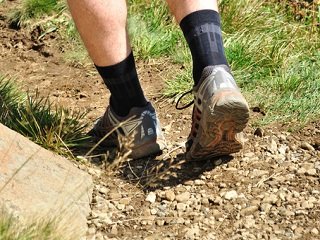 You can scour the Internet for hiking and camping tips, consult local guides, or even head to the nearest bookstore or library for pages of helpful tips, but I’ll be the first to tell you that learning a lot about what to do is only half of it. What also helps is taking measures against what not to do. We can become so busy focusing on the proper steps and uses for our gear that we often commit common errors that can lead to a horrible trip. Today, I’ve listed several such mistakes in hopes that, by remembering what not to do the next time you hit the trail, you’ll have a safer, more enjoyable time.
You can scour the Internet for hiking and camping tips, consult local guides, or even head to the nearest bookstore or library for pages of helpful tips, but I’ll be the first to tell you that learning a lot about what to do is only half of it. What also helps is taking measures against what not to do. We can become so busy focusing on the proper steps and uses for our gear that we often commit common errors that can lead to a horrible trip. Today, I’ve listed several such mistakes in hopes that, by remembering what not to do the next time you hit the trail, you’ll have a safer, more enjoyable time.
One of the biggest mistakes people make is acting like a guide instead of hiring a guide. Now this is more of a risk on long trips in treacherous regions, but inexperienced hikers—out of some degree of misguided, self-imposed superiority—often take it upon themselves to lead the trek, in spite of their inexperience with the activity and the terrain. Do yourself a favor, swallow your pride and hire a guide. You’ll have a much better trip in the long run. That being said, another big mistake is enlisting the services of a cheap guide or trekking company. It can be difficult to find a reliable guide, but try to go by word-of-mouth referrals if you can. Anyone can put anything on a website, but what you hear from people who’ve trekked with a guide is for real.
There’s a fine line between pride and confidence, and many mistakes are made when hikers pole-vault over it. One such instance is comparing a new challenging trip with a previous one. Yes, that multi-day backcountry trip might have been long, but that doesn’t mean it was more difficult than the next one to a different area. Consider terrain, climates, seasons, and elevation changes when comparing trips. A gradual uphill hike, even when it’s dozens of miles longer, is still nothing compared to a rocky, climb-ridden trek through rough landscape.
Inexperience can lead to disaster if you’re not prepared for a number of situations. For instance, you never want to hike in a pair of tennis shoes, especially if it’s a long trip with a chance of varying surfaces. Also, you never want to endure a trip in a brand new pair of hiking boots that haven’t been broken in yet. This is a quick way to a foot covered in blisters and can leave you with nothing but bad memories.
The errors listed above are some of the major ones that can occur on the trail and lead to a very bad trip. I’ve witness them and heard horror stories involving unbroken in gear, false confidence, and misguided perceptions of the ease of future trips and I try my best to make sure they don’t happen to me or those I know. Take the tips outline above to heart and be sure to return for more of what not to do on the trail!








